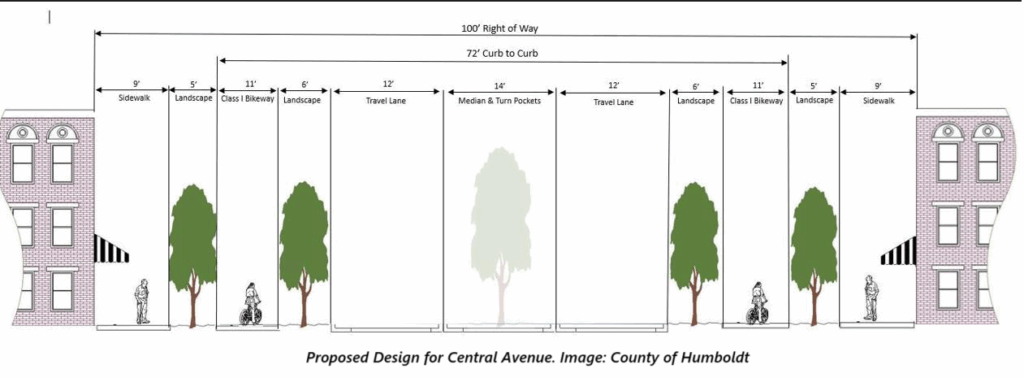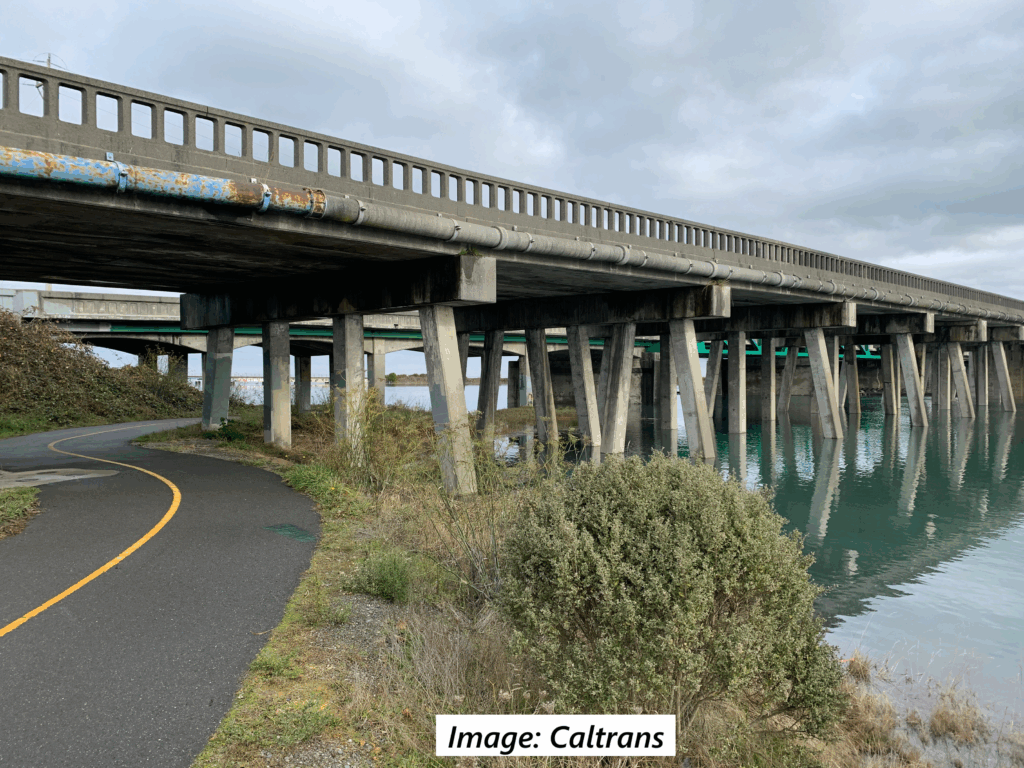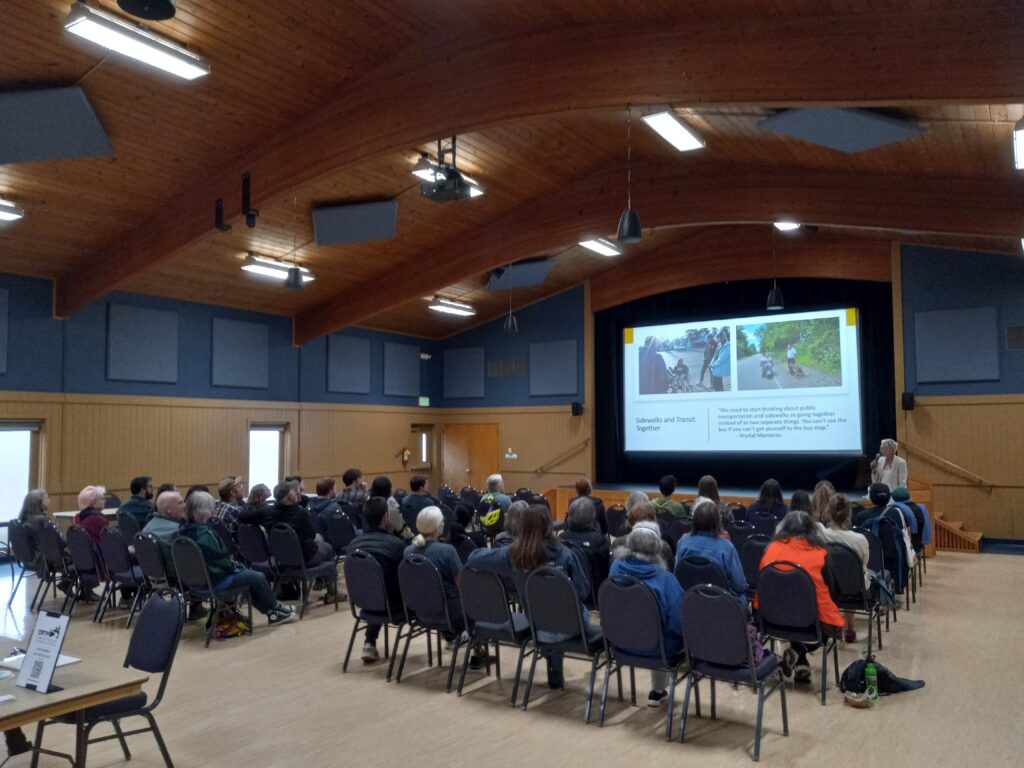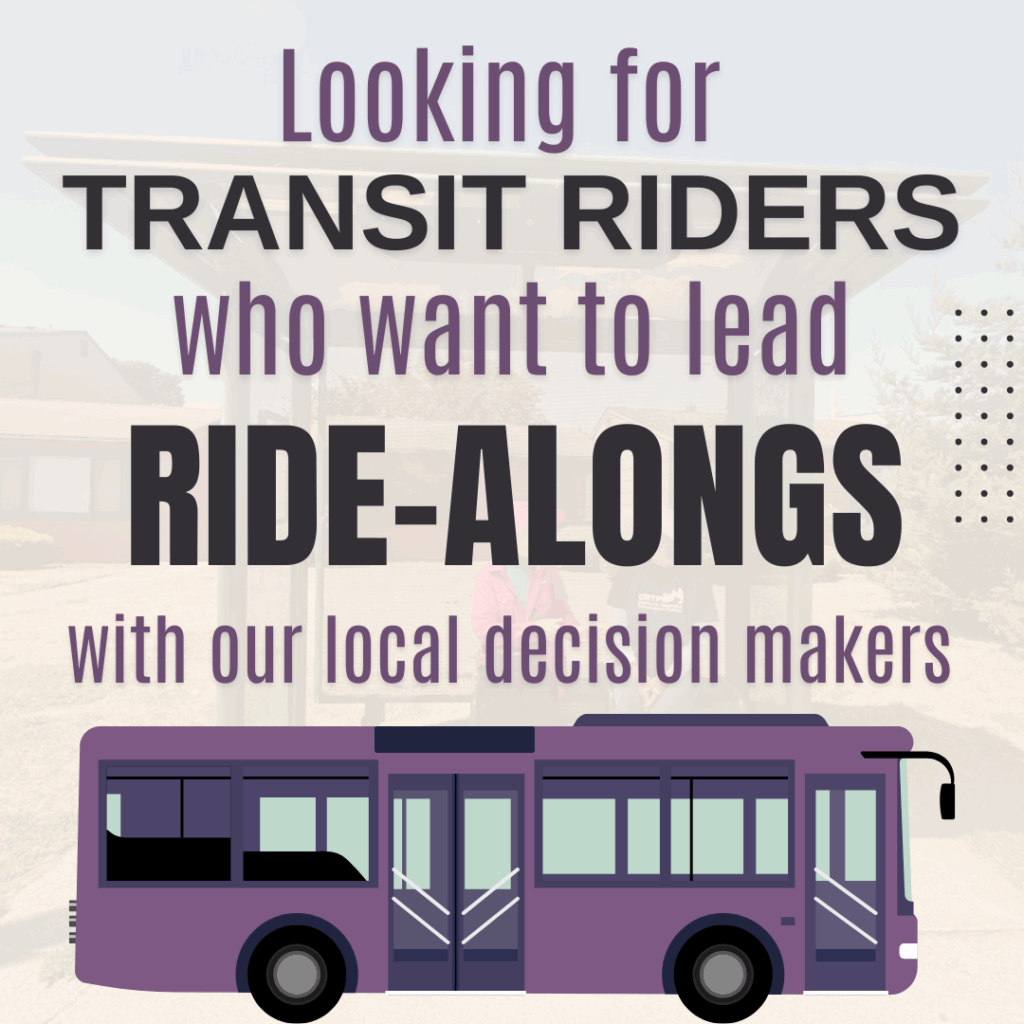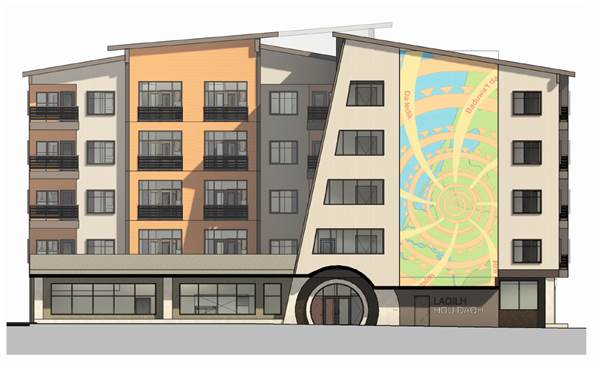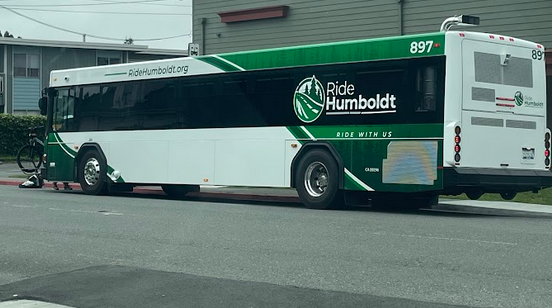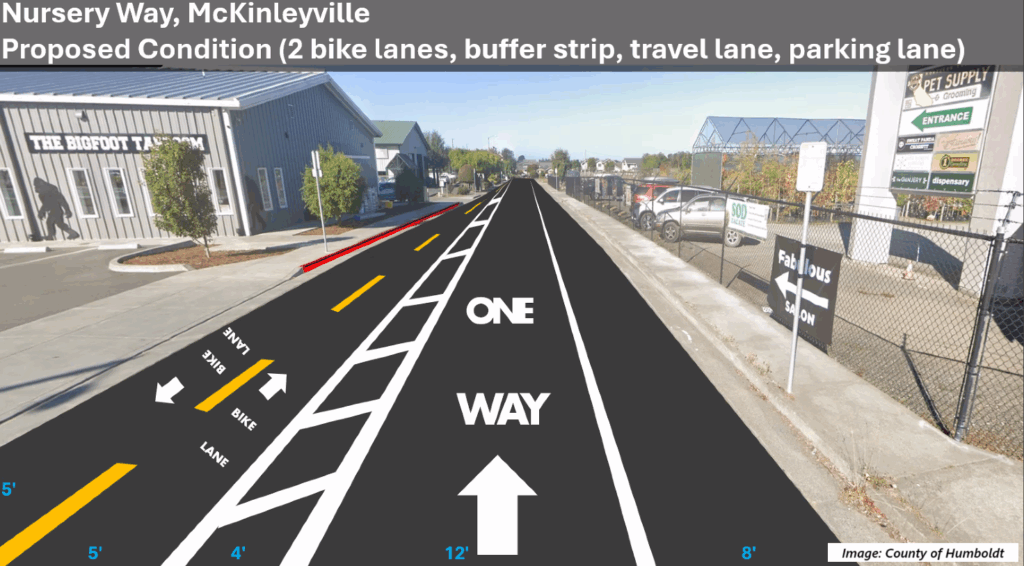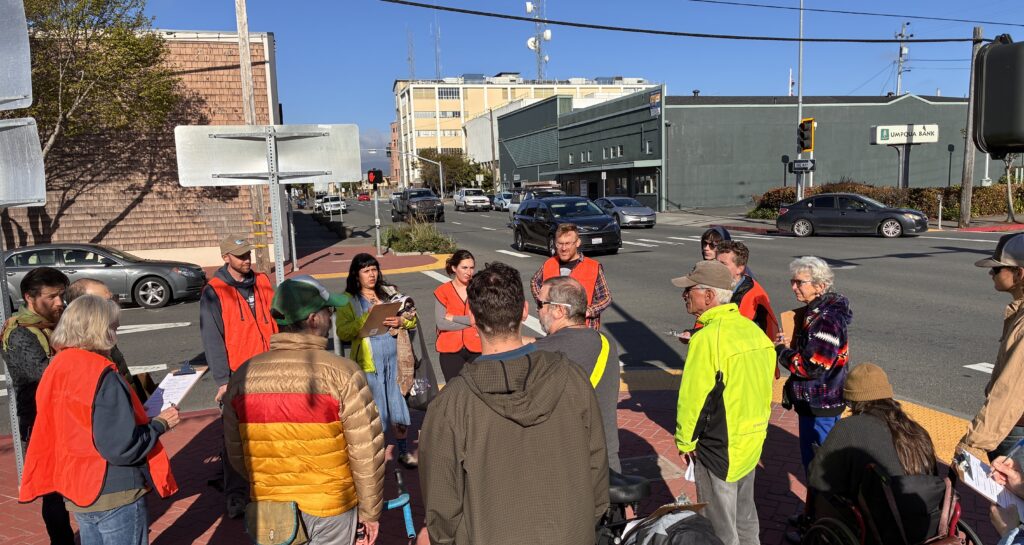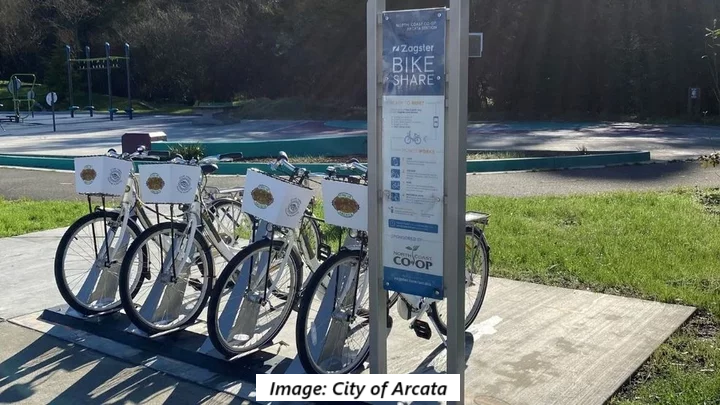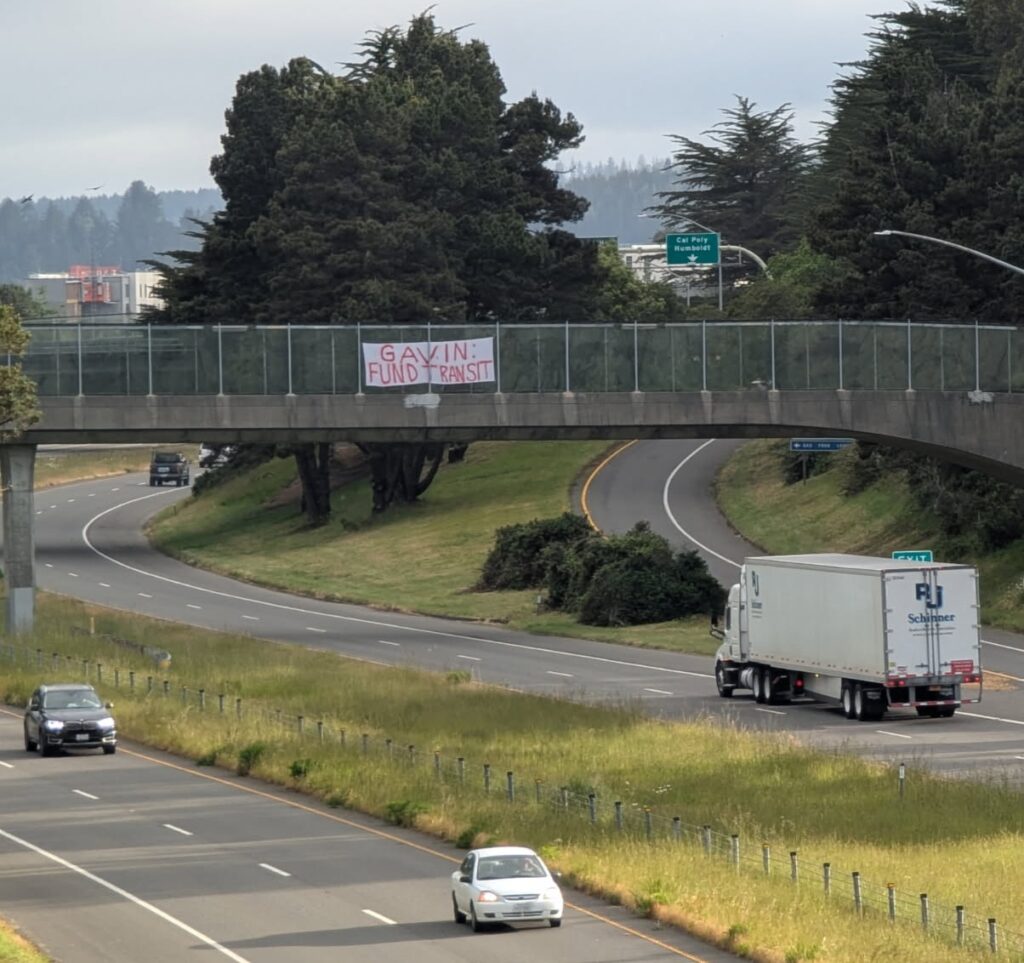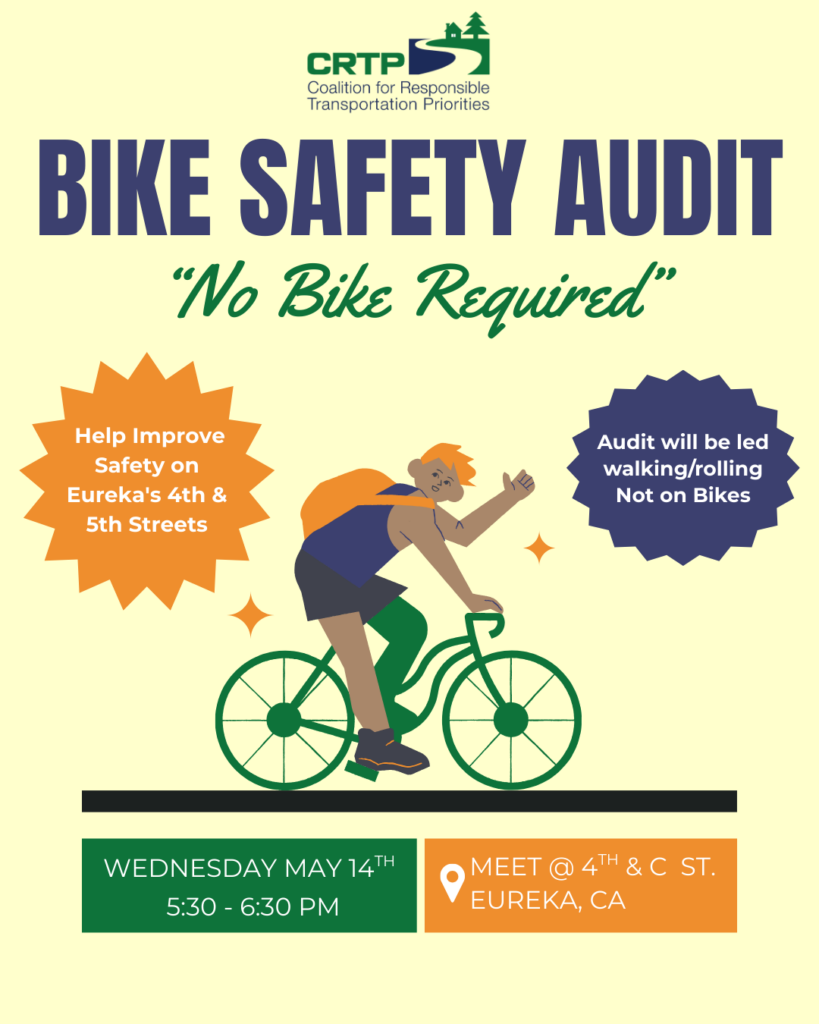The Collector
July 25, 2025
McKinleyville Town Center Plan Faces More Tests
Next week, the McKinleyville Municipal Advisory Committee will hold one more meeting to review the draft Town Center ordinance and its Final Environmental Impact Report – maybe the last of the dozens of such meetings it has held over the last six years. As it stands, the Town Center plans call for the development of more walkable, bikeable, transit-oriented housing, as well as bike and pedestrian safety upgrades including a lane reduction on Central Avenue. The advocacy of CRTP and our members and supporters in McKinleyville has played a key role in shaping these plans.
Unfortunately, many of the most important elements of the future Town Center – from housing density to the safety overhaul of Central Avenue – are still under attack from some opponents. Additionally, the county has muddied the waters by publishing a flawed “traffic study” recommending future street design changes that would speed up traffic and make McKinleyville’s streets less safe for people walking, biking, and rolling. You can dive into the details by reading CRTP’s May comment letter.
As of this writing, the county has not yet published the Final Environmental Impact Report, so we don’t know whether they are proposing any changes or additions to the previously approved Town Center ordinance. But we do know that it will be critical for supporters of a safe, vibrant, walkable Town Center to show up at next week’s meeting – and at the Planning Commission and Board of Supervisors meetings that will follow – to defend the plans for a safer Central Avenue and for more walkable, bikeable, transit-oriented housing.
You’ve Got At Least One More Week to Ride the Bus for Free!
All public buses in Humboldt County are free for the month of July, in celebration of Humboldt Transit Authority’s 50th birthday. Youth (17 and under) and seniors (62 and over) ride free in August, too! Read about Humboldt Transit Authority’s history and recent accomplishments here – and then get out there and Ride Humboldt!
Trails, Housing, and Houselessness
At CRTP, we sometimes hear from people who are concerned about unhoused folks camping near trails in our region. It’s true that people with nowhere else to go often camp along trails, sidewalks, streets, and highways. Our view is that all members of our community, whether housed or not, deserve access to these public spaces, and that people generally only choose to live in these spaces when they don’t have access to affordable housing and other critical services. That’s one of the reasons we support building more safe, affordable homes, in areas with affordable transportation options. It’s also why we’re so proud of the Great Redwood Trail Agency for hiring social service organizations to patrol and keep their right-of-way clean, rather than relying on an armed police force to forcibly remove people. Join us in thanking the agency for this smart, enlightened approach.
Humboldt County Lagging on Accessible Curb Ramps
As we mark the 35th anniversary of the Americans with Disabilities Act (ADA), we applaud the county’s ongoing efforts to improve accessibility at all of its facilities. However, we are disappointed that in all that time, it has only provided accessible curb ramps at a quarter of the known locations that need them. Curb ramps provide critical access for wheelchair users – who sometimes have to ride in the street if there is no ramp to access the sidewalk – as well as for parents pushing strollers and lots of other kinds of pedestrians.
Crash on Broadway Leaves One Dead & Four Injured
Media reports indicate that the driver of a stolen van sped onto the sidewalk and then hit a parked car. The driver died, and three pedestrians were injured along with an occupant of the parked car. This kind of incident is often dismissed as a kind of unforeseeable, unpreventable “accident.” But the truth is that this is far from the first time that a driver has mounted the sidewalk and crashed with tragic consequences, and there are ways we can help prevent this kind of thing from happening again. Better street designs can make it harder to speed, for example, and well-designed barriers can protect bicyclists and pedestrians and keep cars in the street. In fact, these are exactly the kinds of upgrades CRTP has long advocated for on Broadway.
News from Beyond the North Coast
Federal Transportation Reauthorization – Huh?
The 2021 “Bipartisan Infrastructure Law,” which funded many of the nation’s highways and even a few buses and bike lanes, is set to expire next year. That means it’s time to talk about “reauthorization.” This process, which happens in Congress every five years or so, is typically opaque and hard to understand, but has huge implications for safety, climate change, and quality of life. If you’re one of the many people left scratching their heads, check out this helpful introduction to transportation reauthorization.
Parking Is Expensive – Even When the Driver Doesn’t Pay
It’s expensive to build and maintain parking, even when it’s “free” for drivers. So who pays for it? Taxpayers, consumers, renters, homeowners – basically everyone.
The Collector is CRTP’s weekly transportation news roundup, published every Friday. We focus on North Coast news, but we also include relevant state, national and international transportation news – plus other items that we just find kind of interesting! To submit items for consideration, email colin@transportationpriorities.org.

